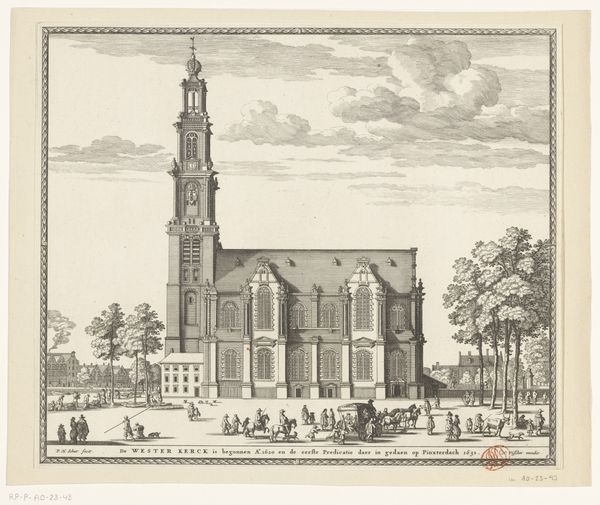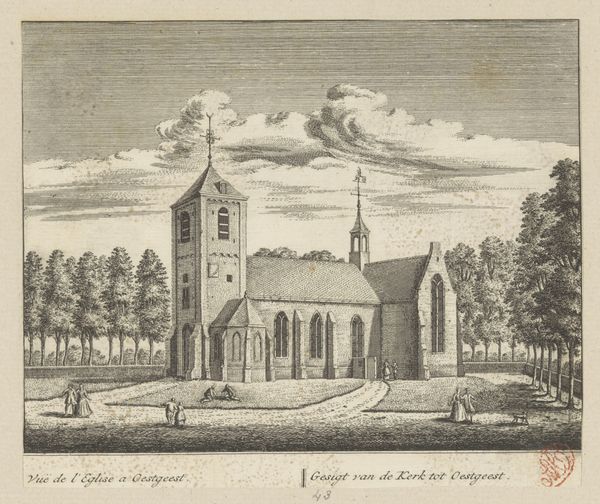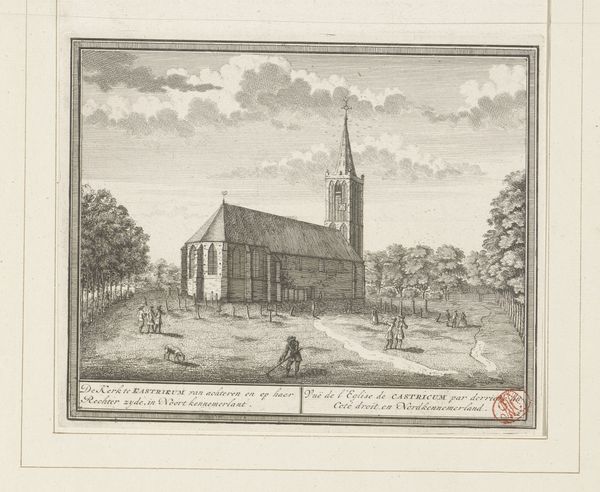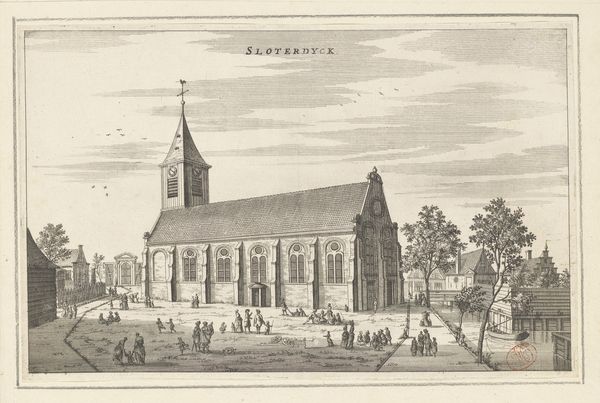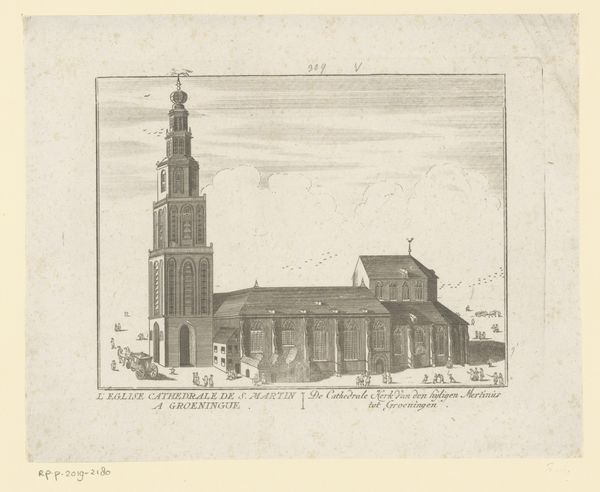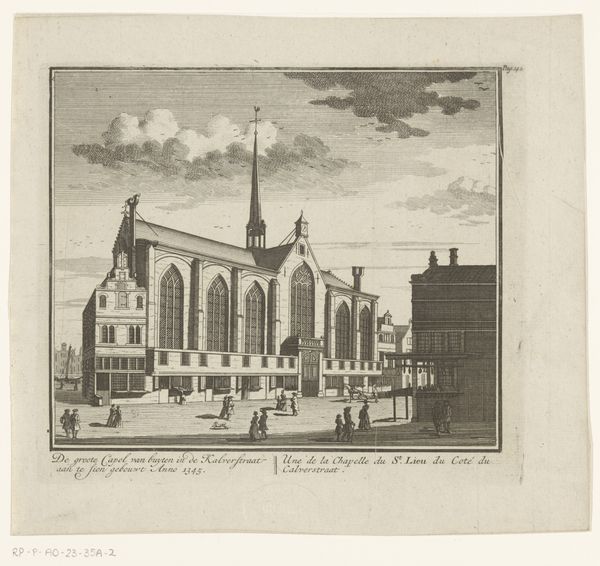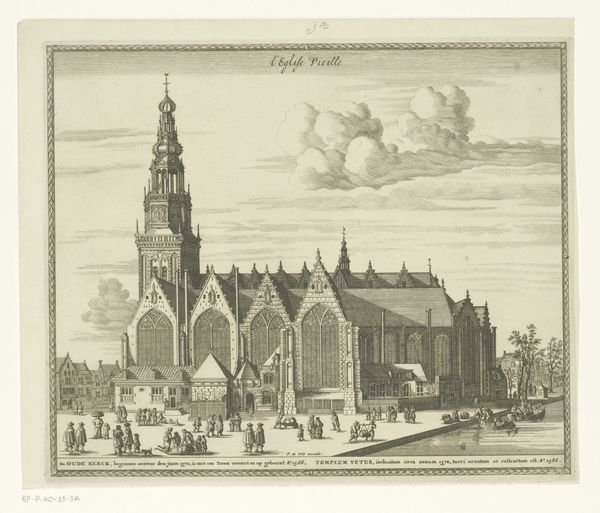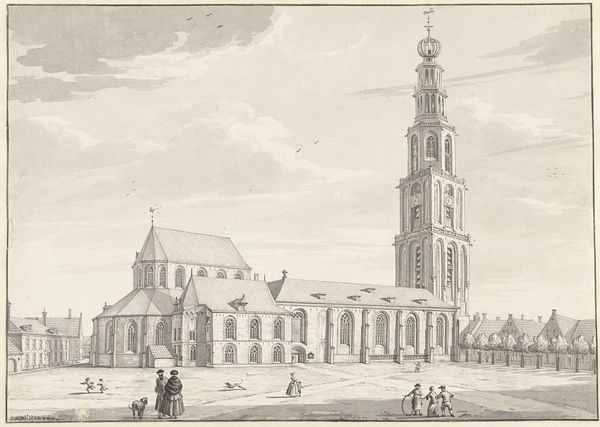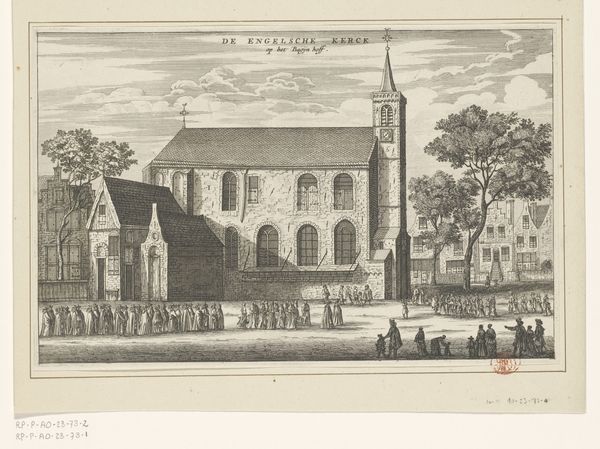
drawing, print, etching, paper, engraving
#
drawing
#
baroque
#
dutch-golden-age
# print
#
etching
#
landscape
#
paper
#
line
#
cityscape
#
engraving
#
realism
Dimensions: height 242 mm, width 287 mm
Copyright: Rijks Museum: Open Domain
This print of the Westerkerk in Amsterdam was made in 1726 by an anonymous artist, using an engraving technique. Engraving is an intensive process. The artist would have used a tool called a burin to carve lines directly into a metal plate. The depth and spacing of these lines determine the amount of ink they hold, and therefore the darkness of the printed line. The plate would then be inked, and pressed onto paper. Because the process is so labor-intensive, prints like this were typically made within a workshop setting. The image itself testifies to Amsterdam’s prosperity during the Dutch Golden Age, when the Westerkerk was built. This church acted as a civic symbol, and would have been a source of great pride for the people of Amsterdam. Its appearance in a print like this demonstrates the wide distribution of such images in Dutch society, reflecting both its cultural and economic importance. Consider the skilled labor, the social context, and the aesthetic value – and you’ll begin to see why prints like this challenge the traditional distinction between fine art and craft.
Comments
No comments
Be the first to comment and join the conversation on the ultimate creative platform.
